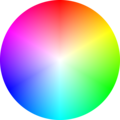Talk:Maya blue
| This article is rated C-class on Wikipedia's content assessment scale. It is of interest to the following WikiProjects: | ||||||||||||||||||||||||||||||||||||||
| ||||||||||||||||||||||||||||||||||||||
"Discovery"
[edit]The article makes the claim that Reyes-Valerio "discovered" the chemical compound in 1993 (as does the accompanying ref). Yet, the other sources I've added here indicate that the composition was essentially known since the 1950s / 1960s. Perhaps there's some more specific aspect to Reyes-Valerio's analysis meriting the claim- but it is not presently clear.--cjllw | TALK 05:41, 16 March 2007 (UTC)
Clarification
[edit]Reyes-Valerio worked with the pigment that was well-known by 1993. What he discovered were some of the ingredients through Fourier spectroscopy and microscopy, the way the clays got to the pigment in the first place and the way to prepare the actual pigment using the basic ingredients. This has been clarified now in the article. —Preceding unsigned comment added by 143.167.162.22 (talk) 15:09, 10 December 2007 (UTC)
- OK, thanks r-v. --cjllw ʘ TALK 23:39, 16 December 2007 (UTC)
I considered the article is missing an important paper but apart of that is a nice contribution. I would like also to hear something about the discovery of Yacaman et al (1994) www.sciencemag.org/content/273/5272/223 (Science 12 July 1996:Vol. 273) where give a new explanation how the Maya blue withstands harsh enviroments by discovering metal nanoparticle embeded in its palygorksite structure. — Preceding Nislai comment added by Special:Contributions/Nislai 10:21, 3 December 2011 (UTC)
First image is NOT Maya blue
[edit]This image does not depict Maya blue. It is a highly modified (re-colored and rotated) crop of this image: http://research.mayavase.com/kerrmaya_list.php?_allSearch=&hold_search=&vase_number=791&date_added=&ms_number=&site=&x=0&y=0
The source object is in the Princeton University Art Museum, object y1993-17 (http://artmuseum.princeton.edu/collections/objects/33616)
173.72.31.109 (talk) 21:01, 11 June 2013 (UTC)Bryan R. Just, Princeton University Art Museum
Color Codes
[edit]The values listed for Maya Blue are partially incorrect. The Hex triplet and sRGB are correct values.
The values shown for HSV are wrong and are in fact values for the HSL system. The correct HSV values are (205.1°, 54.2, 98.4)[1]
--Mdekato (talk) 14:05, 9 September 2016 (UTC)
References
"Turquoise" in lede is misleading
[edit]Pigment is indeed turquoise-colored, but the blue is from the indigo dye. No copper is involved. The cite is to an Al Jazeera article. I'll edit this & try to do some cleanup as time permits. Busy now. Pete Tillman (talk) 16:06, 30 July 2025 (UTC)
- New article to add: [1] "Scientists trace mineral sources for sacred Maya Blue in Late Classic pottery from Buenavista, Belize", news item July 30, 2025.
- Peer-reviewed journal ref: Palygorskite from Sacalum, Yucatán in Maya Blue From the Eastern Maya Lowlands, 13 June 2025. Open access. doi:10.1017/S0956536125000082 --Pete Tillman (talk) 16:30, 30 July 2025 (UTC)
- C-Class color articles
- Low-importance color articles
- All WikiProject Color pages
- C-Class Mexico articles
- Low-importance Mexico articles
- WikiProject Mexico articles
- C-Class Indigenous peoples of the Americas articles
- Unknown-importance Indigenous peoples of the Americas articles
- Indigenous peoples of the Americas articles


